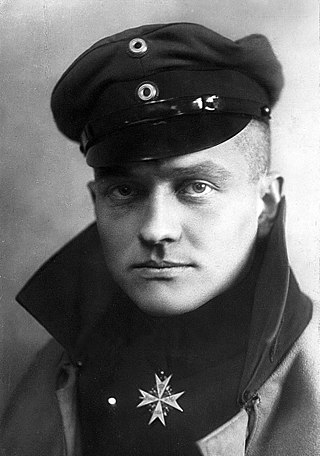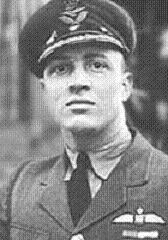Related Research Articles
Robert Alexander Little,, a World War I fighter pilot, is generally regarded as the most successful Australian flying ace, with an official tally of forty-seven victories. Born in Victoria, he travelled to England in 1915 and learned to fly at his own expense before joining the Royal Naval Air Service (RNAS). Posted to the Western Front in June 1916, he flew Sopwith Pups, Triplanes and Camels with No. 8 Squadron RNAS, achieving thirty-eight victories within a year and earning the Distinguished Service Order and Bar, the Distinguished Service Cross and Bar, and the French Croix de guerre. Rested in July 1917, he volunteered to return to the front in March 1918 and scored a further nine victories with No. 3 Squadron RNAS before he was killed in action on the night of 27 May, aged twenty-two.

The following are lists of World War I flying aces. Historically, a flying ace was defined as a military aviator credited with shooting down five or more enemy aircraft during aerial combat. The term was first used by French newspapers, describing Adolphe Pégoud as l'as, after he downed seven German aircraft.

Andrew Edward McKeever DSO, MC & Bar, DFC was a Canadian World War I two-seater flying ace who, in conjunction with his gunners, was credited with 31 victories. He was the highest scoring pilot on Bristol F.2 Fighter.

Rittmeister Carl Bolle, PlM, MMC, HOH, IC, was a fighter ace with 36 aerial victories during World War I. He became a Jagdstaffel commander during that war, and an advisor to the Luftwaffe during World War II.
Captain Dennis Latimer was a British World War I flying ace notable for achieving twenty-eight aerial victories, all against enemy fighter aircraft.

Hans Kirschstein, winner of the Pour le Merite, Royal House Order of Hohenzollern, and the Iron Cross, 1st and 2nd class, was a German lieutenant and World War I flying ace credited with 27 aerial victories.
Ernest John Elton, was the highest scoring British non-commissioned flying ace during the First World War. He was credited with 17 aerial victories.
Lieutenant Eugene Seeley Coler (1896-1953) was an American World War I flying ace who served in the British Royal Flying Corps and Royal Air Force. He was credited with 16 aerial victories.
Leutnant Ludwig Hanstein HOH, Bavaria's MMO was a World War I flying ace credited with 16 aerial victories.
Sergeant Frank Johnson was a World War I flying ace credited with 16 aerial victories. He flew as both an observer/gunner and as a pilot, and is the only enlisted man to receive a second award of the Distinguished Conduct Medal.
Squadron Leader Anthony Herbert William Wall was a British World War I flying ace credited with sixteen aerial victories. He returned to serve in the Royal Air Force in World War II.
Sergeant Ernest Arthur Deighton was an English World War I observer/gunner flying ace credited with 15 confirmed aerial victories; all but one of them was against enemy fighters.
Lieutenant Alfred Stanley Mills was a World War I flying ace credited with 15 aerial victories.
Lieutenant Ernest Hardcastle was an English World War I flying ace observer/gunner credited with twelve aerial victories. He would return to military service during World War II.
Second Lieutenant Francis James Ralph was a British World War I ace credited with 13 confirmed aerial victories over German fighter aircraft while flying as an aerial observer.
Captain Frank Godfrey, was an English World War I flying ace credited with 12 victories. All his victories were achieved against German fighter aircraft.

During World War I, the national air services involved developed their own methods of assessing and assigning credit for aerial victories.
Oberst Paul Aue was a World War I flying ace from the Kingdom of Saxony in the German Empire. Partial records of his early aviation career credit him with 10 aerial victories. He would join the nascent Luftwaffe during the 1930s and serve Germany through World War II. He died in a Russian prison camp in 1945.
Captain Charles George Douglas Napier, was a British World War I flying ace credited with nine aerial victories before being killed in action.
Second Lieutenant Arthur Rex Hurden Noss was a British World War I flying ace credited with nine aerial victories. He won a Military Cross as Keith Park's gunner, and was killed in a flying accident shortly thereafter.
References
- British and Empire Aces of World War I. Christopher Shores. Osprey Publishing, 2001. ISBN 1-84176-377-2, ISBN 978-1-84176-377-4.
- Bristol F2 Fighter Aces of World War 1. Jon Guttman. Osprey Publishing, 2007. ISBN 1-84603-201-6, ISBN 978-1-84603-201-1.